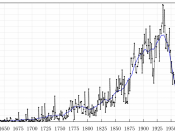In Canada, David Milgaard was sentenced to life imprisonment for the 1969 murder of Gail Miller, a Saskatoon nursing aide. David spent 22 years in prison, The Supreme Court set aside Milgaard's conviction in 1992, and he was cleared by DNA evidence in 1997. The Saskatchewan government awarded Milgaard $10 million to try and compensate for 22 years of his life gone to waste. If David was in the United States, he would be condemned to capital punishment. He would have been wrongfully murdered and no amount money could compensate for his death. This case could have caused even more problems if capital punishment was reinstated. After the abolition of capital punishment murder rates in Canada have gone down. The deterrent effect of capital punishment has been proven futile. More and more of the public are now opposing the death penalty. Also, many relious groups are against the death penalty.
Canada should not reinstate the capital punishment.
Capital punishment was removed from the Canadian Criminal Code in 1976. The murder rate did not increase after this act, but instead it went down. The total number of murders in Canada in 2001 was 554. That is 167 less than in 1975. Reactions to this suggested that because there have been advancements in crime fighting since 1975 such as DNA testing, people realize that there is a greater risk to being caught, therefore the decrease in murder. But this is proven to be wrong because compared to American murder rates; Canada is generally three times lower. In 1999, Canada's murder rate was 1.8 per 100 000 population. In that same year, the U.S. homicide rate was 5.7 per 100 000 population in the United States, according to the U.S. Bureau of Justice Statistics.
Just as in the case of David Milgaard there...


